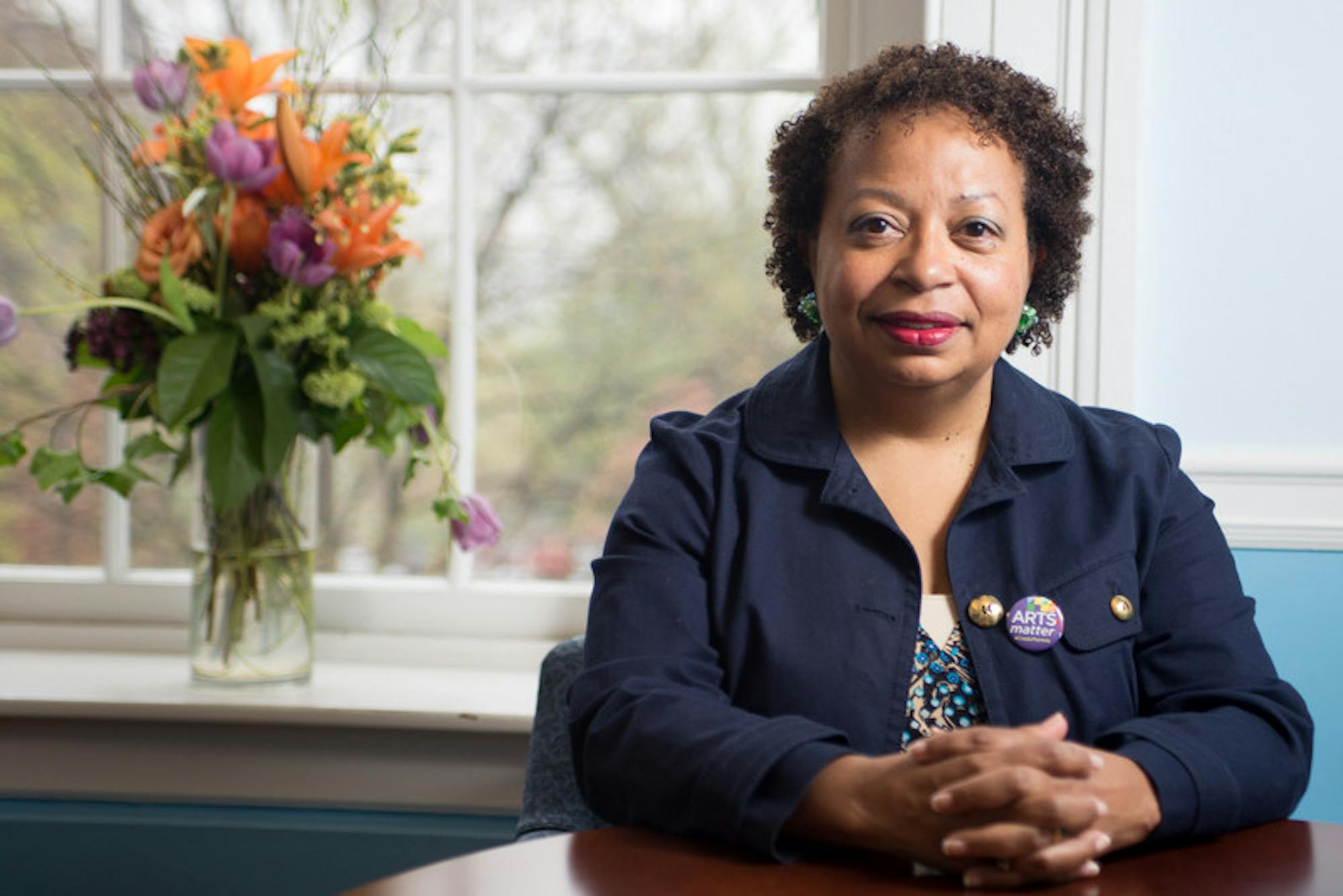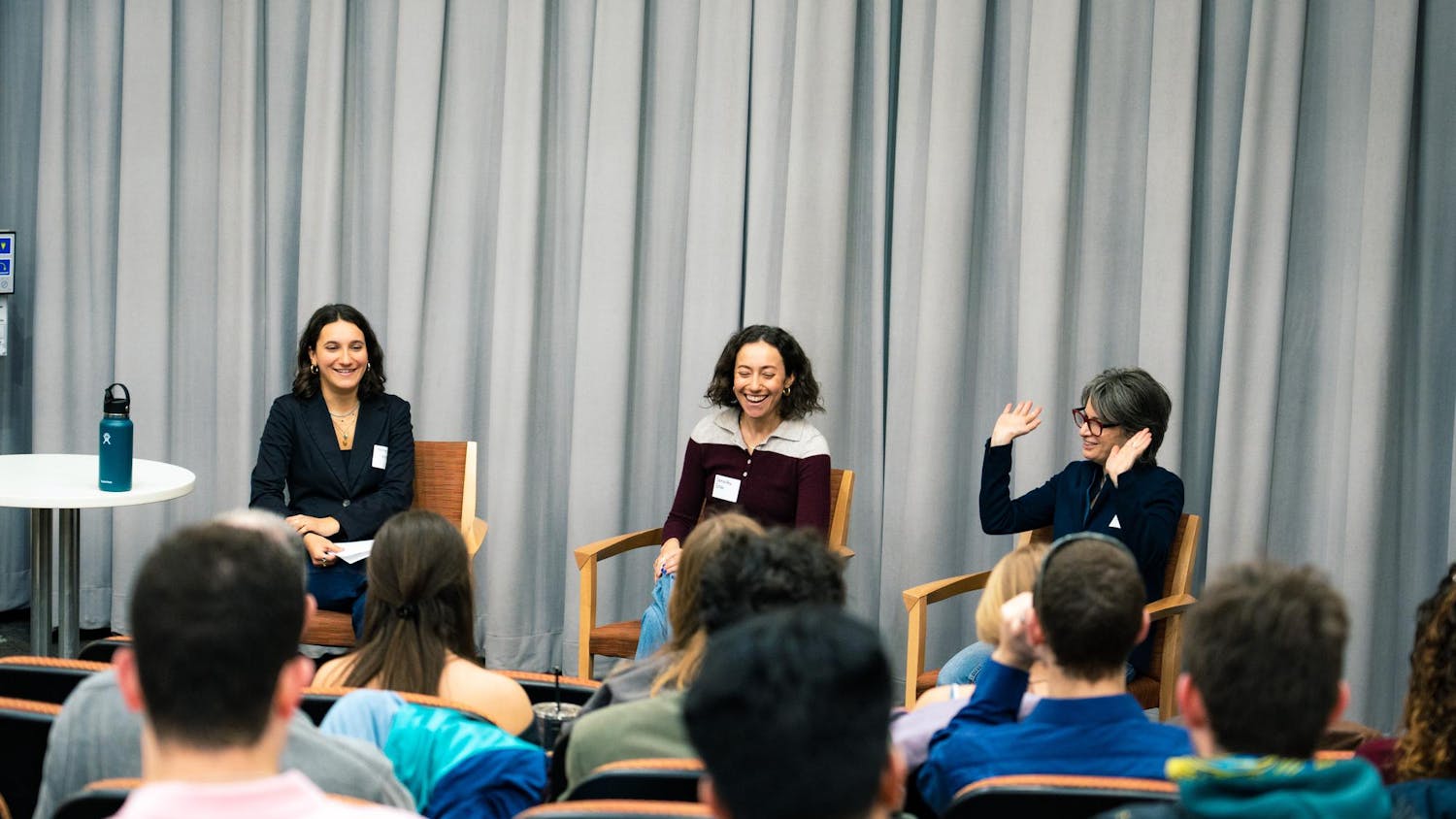Dean of the School of Arts and Sciences Joanne Berger-Sweeney will leave Tufts this summer to become the 22nd President of Trinity College in Hartford, Conn.
Berger-Sweeney, who served as dean for four years, will be replaced by an interim dean who is expected to be named soon, Provost David Harris told the Daily in an email. Harris said the search for a permanent dean will follow.
During her tenure, Berger-Sweeney's focus has been in supporting interdisciplinary programs, improving diversity and inclusion across the university and making changes to undergraduate admissions.
Dean of Academic Affairs for Arts and Sciences James Glaser said Berger-Sweeney's support for both strategic hiring efforts, which have linked faculty across departments, and interdisciplinary programs was particularly noteworthy.
"We have strengthened across departments, and I think it's allowing us to have a whole that's bigger than the parts," Glaser said.
University President Anthony Monaco emphasized Berger-Sweeney's initiative to hire clusters of individuals in departments that share interdisciplinary studies.
"Dean Berger-Sweeney was a strong supporter of interdisciplinary programs without ever forgetting that such programs must have, as their foundation, outstanding scholarship in each discipline," Monaco told the Daily in an email. "Exemplifying this were the school's cluster hires in areas such as environmental studies; race and ethnicity; food, science and society and digital humanities."
Interdisciplinary programs started in the past four years include the Africana studies major and minor, the cognitive science Ph.D. program, music engineering and the finance minor, as well as a colonialism studies minor that the faculty approved on May 7, according to Berger-Sweeney.
"It's not just that we've hired additional faculty," Glaser said. "It's that we're hoping that there will be some synergies that happen between these new members of our community, particularly with regard to pedagogy, and [from which] our students would benefit."
Berger-Sweeney also left a legacy at Tufts based on the strides she has taken toward diversifying the faculty at Tufts, according to Glaser.
"I care deeply about diversity and have tried to approach it from many different angles to make the school a more inclusive place," Berger-Sweeney said.
Glaser said that faculty diversification has been a priority, and that much planning has been going into the hiring process, but the process itself does require time.
"It has been something that has been an overall goal for the division," Glaser said. "For the faculty, it's required the participation of many people, but I think the tone was set at the very top and the goal was set at the very top and there's been demonstrable results."
Berger-Sweeney said that the school has added 50 more full-time faculty members in the past 10 years, and that, in the past four years, the racial and ethnic diversity of the faculty has increased by 10 percent.
"We really moved the needle," Berger-Sweeney said. "Not just brought people in while others left, but actually increased the overall diversity of our faculty."
Berger-Sweeney said she worked with Dean of the School of Engineering Linda Abriola and Associate Dean of Faculty Affairs of the Engineering School Margery Davies to articulate policies that afforded faculty better support during parental leaves and time off for family and non-academic issues.
Diversity also increased within the university's leadership, specifically in the Board of Advisors of the School of Arts and Sciences, who are ambassadors for the school and serve as philanthropists and advisors, Berger-Sweeney said.
Berger-Sweeney also opened the Center for the Study of Race and Democracy and served as vice chair of the Council on Diversity with Monaco, where she drafted a set of recommendations that defines the role diversity plays in the university's mission.
Though the strength of enrolled students and the university's popularity has increased over the last four years, continued diversification will be important to ensure Tufts' relevancy, Berger-Sweeney said. In this regard, financial aid has also been a point of focus.
"There is still not enough financial aid to go around to admit all of the incredible, strong students that we want to," Berger-Sweeney said. "We're giving a higher percentage of our money to financial aid and still trying to do some of these other really great things. But still, you want to do more."
In terms of policies and procedures, Berger-Sweeney said, during her time at Tufts, there have been several positive changes, including revisions to the advising system for undergraduate students.
"We're on a better trajectory," she said. "We still have a ways to go, but we're so much further than we were four years ago when I walked in the door."
Glaser added that the Bridge to Liberal Arts Success at Tufts , an initiative that gives support to students from disadvantaged backgrounds, has been another major success Berger-Sweeney initiated.
"It has been a very ambitious and already successful venture in supporting a cohort of students who the university was not supporting well before," Glaser said. "I know that's a very big accomplishment of hers, and I think she has taken great pride in that."12






